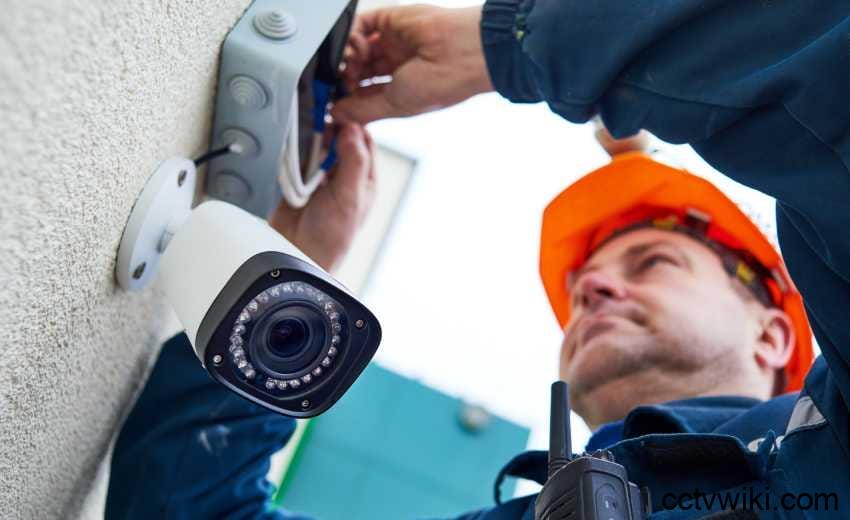Across industries, organizations are waking up to a harsh reality: outdated surveillance systems aren’t just clunky – they’re downright dangerous. In a world of ever-evolving threats and rapidly advancing tech, clinging to old video cameras can create critical weak spots.
From missed crime alerts and compliance failures to gaping cybersecurity holes and ballooning maintenance bills, the consequences of procrastination can quickly spiral out of control. With high-definition footage, real-time alerts, and intelligent analytics becoming the cornerstones of modern security, delaying infrastructure upgrades could mean falling dangerously behind the curve.
In this special report, industry titans from Verint, Netwatch, and Intellicene dissect how neglecting to modernize surveillance systems impacts everything from spotting threats to maintaining rock-solid operational resilience.
The risks of stagnation
Today’s security landscape demands more than just basic video capture. Yet, across various sectors, organizations continue to drag their feet on replacing aging surveillance cameras – many of which lack decent resolution, real-time capabilities, or even basic cybersecurity defenses.
“In the financial sector [for instance], relying on outdated video systems creates risks that can escalate quickly,” warns Matt Tengwall, Senior Vice President and Global General Manager at Verint. “Many legacy cameras lack the resolution and reliability to capture critical events – suspicious activity near an ATM, a fraudulent transaction at a teller window, or a security incident inside a branch.”
This failure to capture usable video can throw a wrench into investigations, slow down response times, and even jeopardize compliance with internal rules or government regulations. In high-stakes industries like banking, the consequences are particularly dire.
Tengwall adds, “Over time, the cost of waiting compounds. Institutions may spend more time recovering lost footage, manually pulling video across locations, or compensating for poor image quality that doesn’t meet standards.”
Kurt Takahashi, CEO of Netwatch, emphasizes how obsolete systems can erode security capabilities over time. “Delaying the upgrade of surveillance cameras exposes organizations to a range of often avoidable risks,” he says. “Outdated systems often lack critical features, suffer from poor resolution and limited storage, and can lead to cybersecurity vulnerabilities.”
These technical shortcomings, he adds, “can snowball into more serious issues – missed threat detection, failure to integrate with modern technologies, and increased maintenance or recovery costs.”
Falling behind in the security arms race
Greg Colaluca, General Manager of Intellicene, frames the risks of obsolescence in a broader context: the relentless evolution of threats.
“Security technologies are constantly evolving, and in turn, so are the methods bad actors use to circumvent an organization’s security measures,” Colaluca explains. “When security teams quit upgrading and integrating their systems, they risk falling behind in the hypothetical ‘arms race’ with would-be criminals – especially in population-dense areas with high crime rates.”
The problem isn’t just about camera hardware, he clarifies. Cutting-edge technologies like AI-powered video analytics, cloud storage, and real-time monitoring require a solid foundation of compatible devices. Old equipment that can’t play nice with these innovations can hold back the entire system.
“This creates blind spots, inefficiencies, and silos of disconnected systems that reduce the effectiveness of a broader security strategy,” Colaluca warns.
Modern surveillance: beyond resolution
Today’s surveillance systems are more than just image capturers – they’re intelligence tools designed to help security teams work smarter and faster. In environments like financial institutions, this includes features like redaction tools to protect privacy, remote access for faster decision-making, and real-time alerts for immediate incident response.
“Upgrading video infrastructure means more than better resolution,” Tengwall emphasizes. “It’s about helping security and fraud teams work faster, collaborate more easily, and stay ahead of operational demands.”
When outdated systems are in place, these efficiencies vanish. Investigations drag on. Teams can’t access critical footage when they need it most. And compliance lapses can lead to reputational damage or legal trouble.
“The longer banks hold off,” Tengwall cautions, “the harder it becomes to close those gaps.”
Netwatch’s Takahashi agrees that modernizing surveillance is an investment in operational resilience. “Proactively refreshing your security infrastructure truly is a strategic move to protect productivity, minimize downtime, and ensure long-term operational resilience,” he says.
Integration challenges and legacy system limitations
Another major headache with outdated cameras is their inability to integrate with newer platforms and technologies. As security ecosystems become increasingly complex – with video analytics, access control, alarms, and cybersecurity tools working in tandem – camera compatibility becomes crucial.
“Compatibility is key,” Colaluca stresses. “As newer technologies are introduced – whether it’s advanced video analytics, cloud storage, or AI-assisted monitoring – older equipment may cause security teams to slow down.”
This not only creates inefficiencies but also fosters operational silos – disconnected systems that don’t share data or insights, undermining threat detection and response efforts.
The maintenance burden of legacy systems is another challenge. As hardware ages, failure rates climb, spare parts become scarce, and repair costs mount. Meanwhile, software updates and cybersecurity patches often disappear altogether, leaving systems vulnerable.
“Ultimately, this translates to diminished protection for your data, facilities, and workforce,” Takahashi says.
Strategic considerations for upgrades
Despite the obvious risks, many organizations delay camera upgrades due to budget constraints, lack of awareness, or the complexity of transitioning from legacy systems. Experts suggest a strategic approach to upgrades can alleviate these concerns.
One effective method is to prioritize based on risk – identifying high-risk areas or locations with frequent incidents and upgrading those systems first. Organizations should also explore platforms that support phased migration, allowing legacy and new systems to coexist during the transition period.
“It doesn’t have to be all or nothing,” Tengwall says. “The key is to start closing the gaps where they matter most.”
Additionally, future-proofing the infrastructure – by investing in open-platform solutions and scalable architecture – ensures that today’s investments remain valuable for years to come.
The path forward
Security teams need to view surveillance camera upgrades not as isolated hardware replacements but as an integral part of a broader security transformation. The growing importance of data integration, analytics, and real-time decision-making has elevated video surveillance from passive monitoring to active risk management.
For physical security integrators and consultants, this shift opens up new opportunities. By guiding clients through strategic upgrade paths, offering solutions that integrate with emerging technologies, and ensuring ongoing compliance, integrators can become vital partners in building resilient security infrastructures.
“Organizations need to understand that this isn’t just about video,” Colaluca emphasizes. “It’s about how video fits into a larger ecosystem of security and operational intelligence.”
The bottom line? Delaying upgrades may save money in the short term, but the long-term costs – in lost footage, increased vulnerabilities, reduced compliance, and higher maintenance – are far greater.
Forward-thinking organizations are taking a proactive stance, not just to keep pace with technology but to stay ahead of evolving threats. In today’s high-stakes security landscape, that’s not just prudent – it’s essential.

